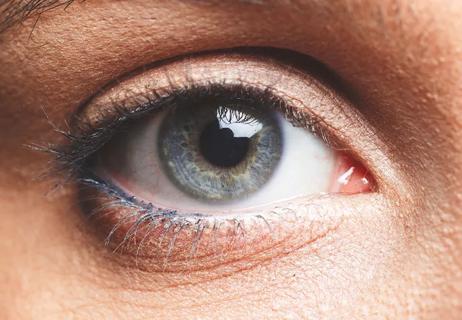Cosmetic procedures such as iris implants and corneal tattooing bring a risk of vision loss

What color are your eyes? The answer for some appears to be “the wrong color” — and they want to do something about it.
Advertisement
Cleveland Clinic is a non-profit academic medical center. Advertising on our site helps support our mission. We do not endorse non-Cleveland Clinic products or services. Policy
Interest in surgeries to change eye color is surging thanks to trending social media posts showing dramatic transformations. Goodbye, “boring” brown eyes! Hello, stunning aquamarine peepers!
But before taking out a color wheel to find your perfect hue, know that you may get more than just a new look from these procedures. You may also end up with vision problems.
We talked to ophthalmologist Nicole Bajic, MD, about the risks.
It’s safe to say eye color-changing procedures raise some concerns.
The American Academy of Ophthalmology (AAO) issued a warning in 2024 about the dangers of surgery to change the color of your eyes. The call for caution emphasized that the procedures bring a risk of vision loss and other complications.
“We do not recommend these sorts of procedures,” stresses Dr. Bajic. “A lot can go wrong for something done purely for cosmetic reasons. It’s not worth the risk.”
No eye color-change procedure has been approved by the U.S. Food and Drug Administration (FDA), she adds. Some medical practices in the United States offer the service, however, as an “off-label” option outside of sanctioned practice.
Eye color-change surgery is also performed in other countries around the world.
Advertisement
Different procedures take different approaches to changing eye color. Let’s look at the three most common options and the risks of each.
The color of your peepers is determined by your iris, a layered ring of muscle tissue around the pupil in each of your eyes. Change your iris and you change your eye color.
During an iris implant, an artificial iris made of silicone is placed over your existing iris to give your eyes a new shade. The implant is inserted through a slit cut into your eye near your cornea.
“I have yet to hear of someone doing well from one of these cosmetic implants,” states Dr. Bajic.
Risks of the procedure include:
The FDA has approved iris implants for medical reasons, such as a damaged or missing iris. That procedure comes with the same risks noted. But the difference is the surgery is done to improve compromised vision — not for prettier eyes.
A pigment called melanin gives the iris color. The more melanin you have, the darker your eyes will be, explains Dr. Bajic. People with brown eyes have lots of melanin. People with blue eyes have less.
Laser pigmentation removal can change the appearance of eyes by releasing layers of melanin to reveal lighter colors beneath.
“But one of the big risks in releasing all of that pigment is that it can clog up drains inside the eye,” explains Dr. Bajic. “That can lead to a buildup of pressure that can cause glaucoma and vision loss.”
There are also no guarantees on your final eye color, as the resulting shade depends on the remaining levels of melanin.
Much of the social media buzz around eye color changing involves keratopigmentation, also known as corneal tattooing.
In this procedure, a needle or laser is used to create channels in the cornea, shares Dr. Bajic. Pigment is then injected into this space to give your eyes a new color. (In essence, you’re changing the color above your iris.)
Risks of the surgery include:
There is a way to change the color of your eyes WITHOUT resorting to surgery. Colored contact lenses can give your peepers a makeover without the use of any lasers, incisions or dye injections.
Advertisement
But be wary of “costume” or novelty contacts, warns Dr. Bajic. These nonprescription contact lenses can scratch your cornea and infect your eye.
Talk to your eye doctor if you’re interested in colored contacts to get fitted for a pair, then wear them as prescribed. “Getting colored contacts can give you the look you want without putting your eye health at risk,” she reinforces.
Advertisement
Learn more about our editorial process.
Advertisement

Once your baby’s eyes are exposed to more light, they may start to deepen in hue or change color altogether, usually between 3 and 9 months

Many factors, like eyelid irritation, cosmetic lash procedures and underlying health conditions, can affect your eyelashes

A diet built around fruits, vegetables and healthy fats is a clear 20/20 benefit for your vision

It takes millions of moving parts within the eye to make the power of vision possible

If your eyes suddenly take on a different color, it could be a sign of a medical concern

Act quickly when a chemical or object gets in your eye

This glaucoma drug can also thicken lashes, just note side effects

Be sure to protect your eyes from UV light and hazardous materials

Start having sex about 72 hours before ovulation, then at least every other day during your fertile window

Attachment theory suggests that your earliest relationships shape connections throughout your life

It isn’t a recognized mental health disorder, but research shows that problematic social media use can negatively affect your mental health, self-esteem and sleep